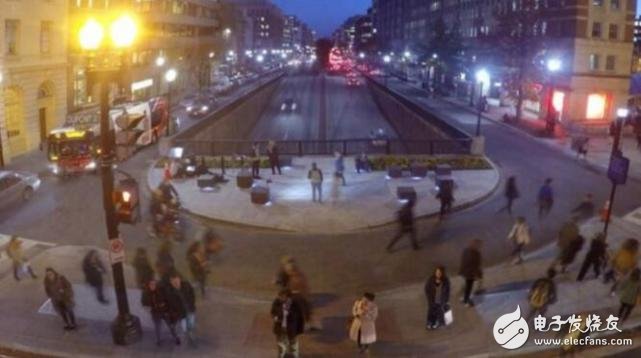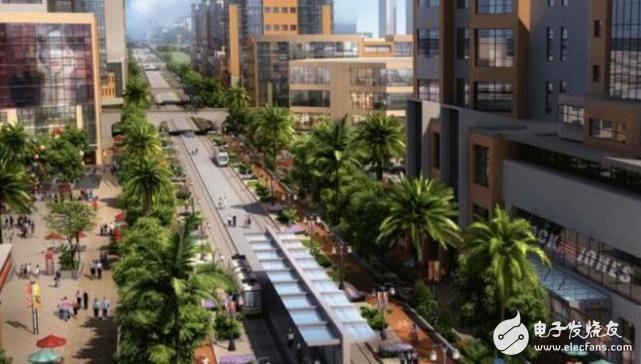Electronic enthusiasts early eight: According to foreign media reports, Los Angeles is the world's car capital. Here, traffic has become a daily chat topic for people, because they often have to estimate how long it takes to get on the road every day after going home from work. In the face of vehicles coming and going, some people have raised the idea of ​​using these traffic to generate electricity. Their idea is to insert a piezoelectric crystal under the mooring road and use the vibration generated by these traffic to generate electricity. It sounds like a fantasy, but the California Energy Commission is preparing to invest $2 million to research the technology. This is also part of the state's action to purify the air. The state's goal is to provide renewable energy to half of the state by 2030. This piezoelectric technology is not a new technology. Its most common application is electronic lighters, which use piezoelectric crystals to create flames. The same technology is also used for electric igniters for barbecues. The microphone in the laptop also uses a crystal that converts the sound vibrations in the voice into electrical signals that can be processed by the computer. A charge is generated when the piezoelectric crystal is pressed. Scientists estimate that if the piezoelectric crystals are laid on a 10-mile highway in Burbank, they will generate enough electricity to supply the entire city. The city has a population of more than 100,000. Currently, this technology has only been applied to small scales. Since 2009, the display screens of the Tokyo Metro Station of the East Japan Passenger Railway Company have been powered by people walking on the floor using piezoelectric technology. In one of Rio's most notorious slums in Rio de Janeiro, startup PaveGen laid a similar floor tile under a football field. When people run around to play football, they can power the night floodlights. This means that the children can continue to play football at night instead of doing nothing to gather on the streets. The company has used this technology to power street lights on a street in central London. It also implemented a similar power supply plan in Washington. California lawmaker Mike Gatto is very happy because the value of this technology is finally recognized. “California is full of road networks. Our car culture is both good and bad.†He said, “No society can do 100% solar energy. Therefore, we need to collect energy from many different channels. I think this technology has great potential for development." In fact, as early as 2011, Gato proposed a similar power supply proposal, and the result was rejected by the governor. “After six months, I received a call from the governor’s assistant. He said they were mistaken and prepared to ask the California Energy Commission to evaluate the technology,†he said. Finally, funds were transferred to the University of California and other institutions to investigate the potential of this technology. Mike Gravely from the California Energy Commission explained why the committee pursued the technology. “California has a lot of active renewable energy policies, and we have a lot of cars here. They run around on the road all day. If we can capture the energy they produce, then this will be another goal that can achieve future energy policy. Renewable energy," he said. The piezoelectric crystal will be placed in a coin-sized device. These coin-sized devices will be placed on the highway under the highway, with a few millimeters between each device. This pilot project will operate for 18 months. During this time, people will assess how much such equipment is needed, how deep it is to be buried under the cement road and which sections are most suitable. Grafley said that if the pilot project proves to be successful, then they may be further promoted. “If there are roads that need to be lengthened or repaired, we can use this opportunity to embed the piezoelectric crystals without having to dig the excavated highways,†he said. “Some people want us to do this on all roads in California, but we don’t know if it’s useful now.†This device may capture more than just energy. “One of the contractors is considering using them to capture relevant information to help better manage road traffic,†he said. Critics may say that avoiding fossil fuels should reduce the number of cars on the road, rather than taking advantage of the huge traffic on California roads. However, Grafley pointed out that California hopes to launch 1.5 million zero-emission vehicles by 2025. In April 2017, the American Lung Association reported that the level of airborne dust pollution in Los Angeles reached its lowest point in history. Despite this, Southern California is still the most polluted area in the United States, ranking first in the United States in terms of ozone layer pollution. A study by the University of New York shows that improved air quality can reduce California's 3,000 cases of pollution-related deaths each year. Some people still question the piezoelectric crystal power generation plan. Urban architect Peter Calthorpe has been calling for a green city by changing lifestyles. “I’m very skeptical about some costly solutions. There are a lot of technologies that capture energy everywhere. But this is not the answer we want. People don’t want solutions to change their lives. But that’s about us. The quality of life. We can only create green cities if we change." Disclaimer: The electronic reprinted works of E-Commerce Network are as far as possible to indicate the source, and all rights of the owner of the work are not transferred due to the reprint of this site. If the author does not agree to reprint, please inform the site to delete or correct it. Reprinted works may be subject to change in title or content. Graphic Card,Integrated Graphics,Ethernet Graphics Card,Industrial Graphics Card Easy Electronic Technology Co.,Ltd , https://www.yxpcelectronicgroups.com



October 23, 2022